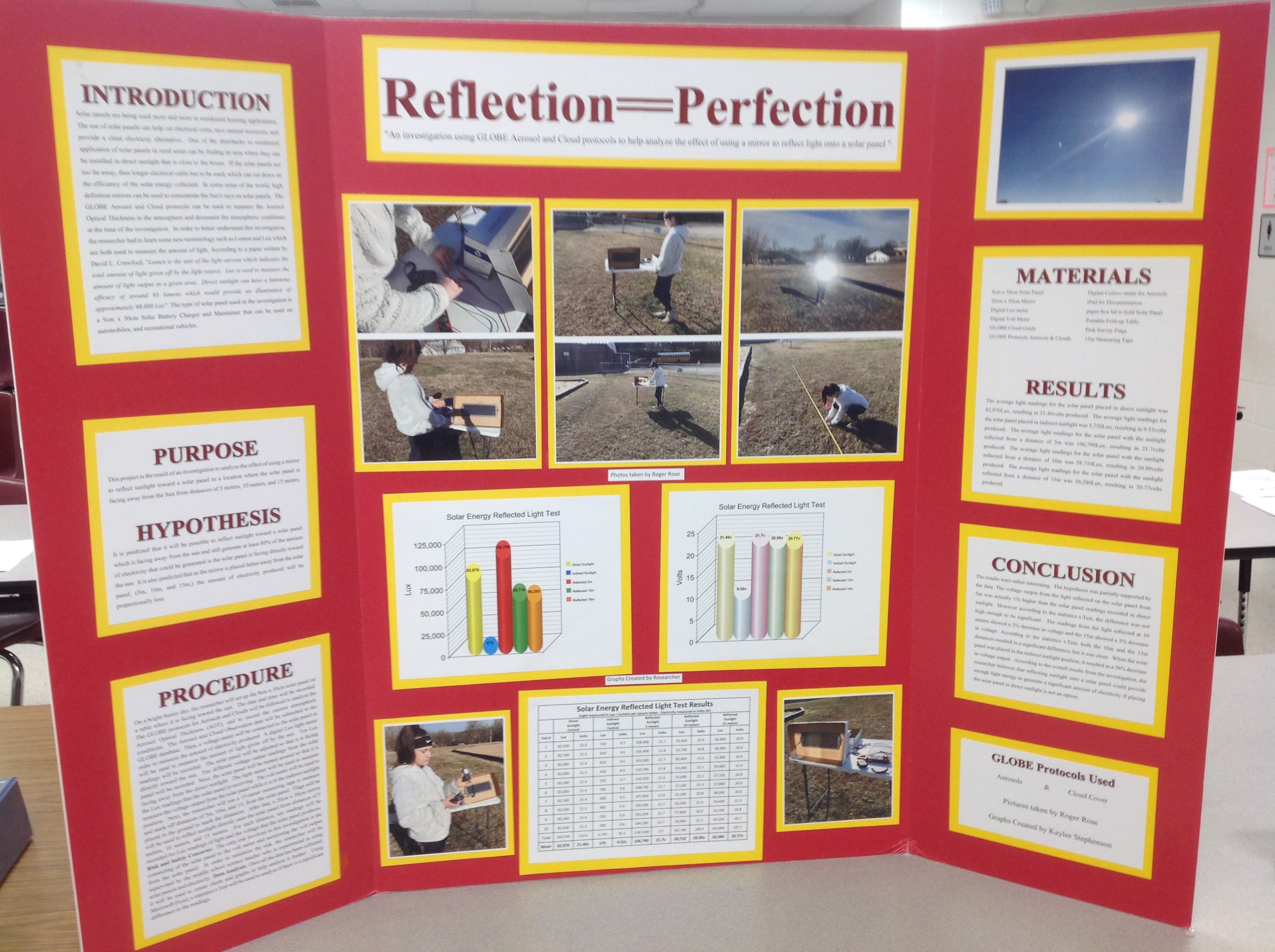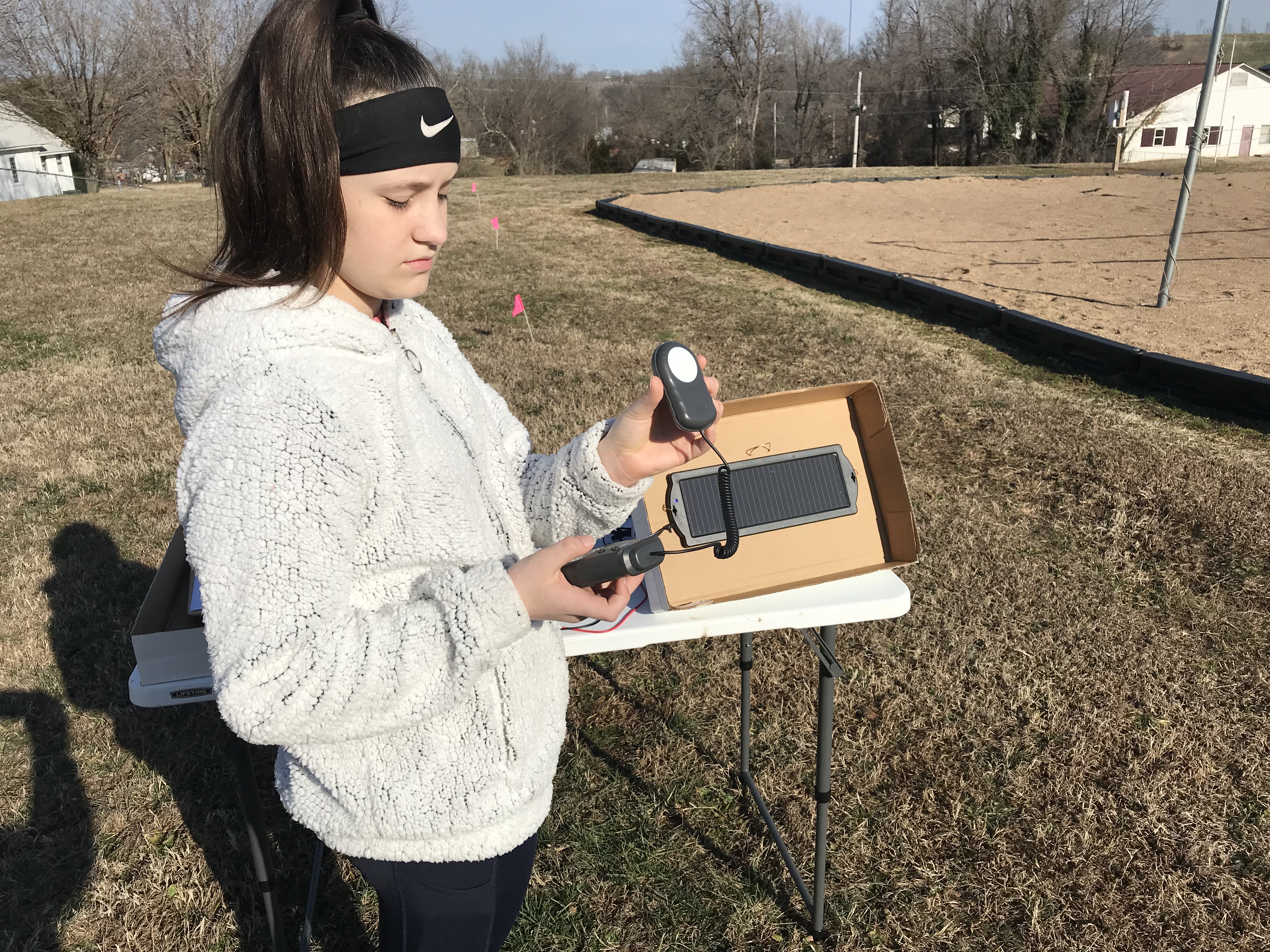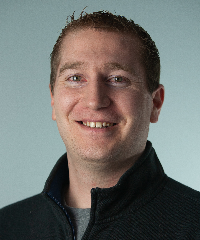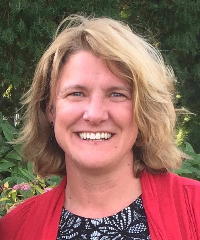RE: Reflection = Perfection - Grade 6 - 2020 SRS - 2020 SRS
GLOBE Breadcrumb
- Home >
- 2020 SRS
Open social media sharing options menu
 Share
Share
GLOBE Side Navigation
Site Name
2020 Student Research Symposium (SRS)
Message Boards
- Home
- RE: Reflection = Perfection - Grade 6
0
Project Title: Reflection = Perfection - Grade 6
School Name: Alpena Elementary/Middle School
Teacher Name: Roger Rose
Student Name: Kaylee Stephenson
Grade Level: 6
Project Description: An investigation using GLOBE Aerosol and Cloud protocols to help analyze the effect of using a mirror to reflect light on a solar panel
Abstract: This project is the result of an investigation to analyze using a mirror to reflect sunlight onto a solar panel where the solar panel is facing away from the Sun from distances of 5m, 10m, and 15m. It is predicted that the reflected sunlight tests will produce at least 80% of the electricity as the control in direct sunlight.
A 9cm x 30cm solar panel was set up in direct sunlight. Lux and volt readings were collected. Then, the solar panel was setup facing away from the sun. Indirect sunlight Lux and volt readings were collected. Them, a 20cm x 50cm mirror was used to reflect sunlight on the solar panel from 5m, 10, and 15m. 10 readings were collected for each series of tests and analyzed with a statistics t-Test.
Readings for direct sunlight was 82,970Lux, with 21.46volts. Readings for indirect sunlight was 5,750Lux, with 9.52volts. Readings for sunlight reflected from 5m was 106,790Lux, with 21.7volts. Readings for sunlight reflected from 10m was 58,710Lux, with 20.99volts. Readings for sunlight reflected from 15m was 56,280Lux, with 20.77volts.
The hypothesis was partially supported by the data. Voltage output from light reflected at 5m was actually 1% higher than for the direct sunlight. According to the statistics t-Test, the difference was not significant. Readings from light reflected at 10m showed a 2% decrease in voltage and 15m showed a 3% decrease in voltage which were significant according to the t-test. The indirect sunlight tests resulted in a 56% decrease in voltage.
Atmosphere Protocols: Atmosphere Protocols: Air Temp, Barometric Pressure, Clouds, Relative Humidity, & Aerosol - AOT
Language: English
Video URL: https://youtu.be/OyLAFBC1nBo
![]()

![]()
School Name: Alpena Elementary/Middle School
Teacher Name: Roger Rose
Student Name: Kaylee Stephenson
Grade Level: 6
Project Description: An investigation using GLOBE Aerosol and Cloud protocols to help analyze the effect of using a mirror to reflect light on a solar panel
Abstract: This project is the result of an investigation to analyze using a mirror to reflect sunlight onto a solar panel where the solar panel is facing away from the Sun from distances of 5m, 10m, and 15m. It is predicted that the reflected sunlight tests will produce at least 80% of the electricity as the control in direct sunlight.
A 9cm x 30cm solar panel was set up in direct sunlight. Lux and volt readings were collected. Then, the solar panel was setup facing away from the sun. Indirect sunlight Lux and volt readings were collected. Them, a 20cm x 50cm mirror was used to reflect sunlight on the solar panel from 5m, 10, and 15m. 10 readings were collected for each series of tests and analyzed with a statistics t-Test.
Readings for direct sunlight was 82,970Lux, with 21.46volts. Readings for indirect sunlight was 5,750Lux, with 9.52volts. Readings for sunlight reflected from 5m was 106,790Lux, with 21.7volts. Readings for sunlight reflected from 10m was 58,710Lux, with 20.99volts. Readings for sunlight reflected from 15m was 56,280Lux, with 20.77volts.
The hypothesis was partially supported by the data. Voltage output from light reflected at 5m was actually 1% higher than for the direct sunlight. According to the statistics t-Test, the difference was not significant. Readings from light reflected at 10m showed a 2% decrease in voltage and 15m showed a 3% decrease in voltage which were significant according to the t-test. The indirect sunlight tests resulted in a 56% decrease in voltage.
Atmosphere Protocols: Atmosphere Protocols: Air Temp, Barometric Pressure, Clouds, Relative Humidity, & Aerosol - AOT
Language: English
Video URL: https://youtu.be/OyLAFBC1nBo


Attachments:
0
From Dr. Dixon Butler: What an interesting investigation. The presentation is good. Did you characterize your mirror, or in other words, did the mirror focus the sunlight? Your research results open up consideration of using mirrors to enable placing solar panels in places where the sun does not shine directly on solar panels.
0
My name is Apryl and I am a Research Technician at the University of New Hampshire and a Graduate Student. My student work is focused on extracting ebullition events (methane bubble events) from a temperate wetland via acoustic data in an effort to better understand how this transport pathway is contributing to the global methane budget. The other projects I work with look at CO2, CH4 and N2O fluxes from wetland and terrestrial systems. We are interested in how climate and land use change affects the emission of trace gases from these systems to the atmosphere. Several of my sites use solar panels to generate the power we need to run our equipment.
I enjoyed your presentation and think you did a great job looking at how distance and indirect light affect the amount of power a solar panel can generate. In our area, cloud cover and tree shadows can make a huge difference in the the amount of power available to run our equipment.
Did you have a specific angle at which you held the mirror in relation to the solar panel?
Have you given any thought to why the 5m distance did better than having the solar panel in the direct sunlight?
Perhaps if you choose to continue this research, it might be interesting to see how different sized panels are affect by indirect light at these same distances.
Great job on the report, it was clear and hit on all the important points!
I enjoyed your presentation and think you did a great job looking at how distance and indirect light affect the amount of power a solar panel can generate. In our area, cloud cover and tree shadows can make a huge difference in the the amount of power available to run our equipment.
Did you have a specific angle at which you held the mirror in relation to the solar panel?
Have you given any thought to why the 5m distance did better than having the solar panel in the direct sunlight?
Perhaps if you choose to continue this research, it might be interesting to see how different sized panels are affect by indirect light at these same distances.
Great job on the report, it was clear and hit on all the important points!
0
Hello, my name is Yunqian and I am a research scientist from the University of Colorado, Boulder. I'm also a GLOBE GISN member.
I enjoy your work and your presentation. I think this work is very creative and can be very useful if the results are solid. Instead of building lots of expensive solar panels, we can build some solar panels and some cheaper mirrors.
I have one question: when you collect the data for 5m, 10m, and 15m mirror tests, how could you avoid the impact from the direct or indirect sunlight? Have you done some subtraction to get the effect only from the mirror?
I enjoy your work and your presentation. I think this work is very creative and can be very useful if the results are solid. Instead of building lots of expensive solar panels, we can build some solar panels and some cheaper mirrors.
I have one question: when you collect the data for 5m, 10m, and 15m mirror tests, how could you avoid the impact from the direct or indirect sunlight? Have you done some subtraction to get the effect only from the mirror?










